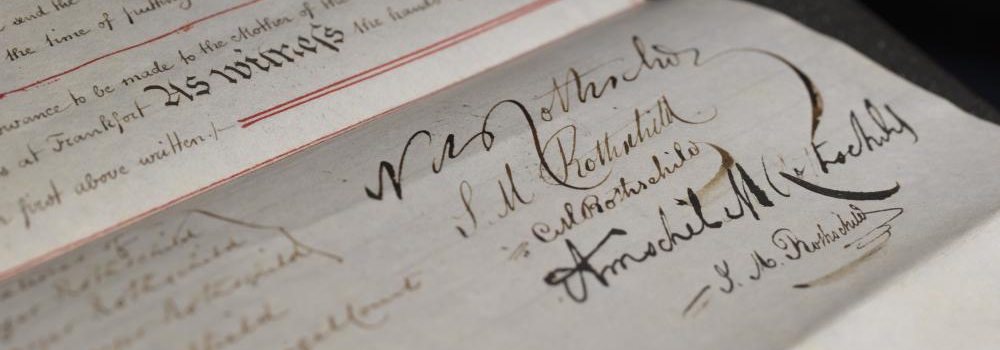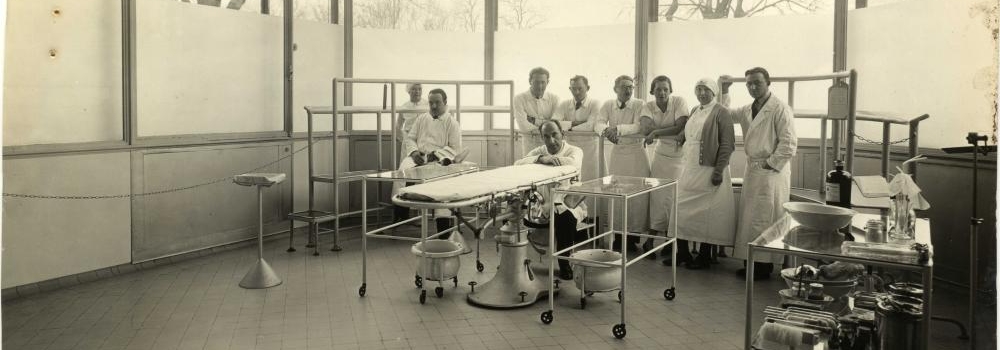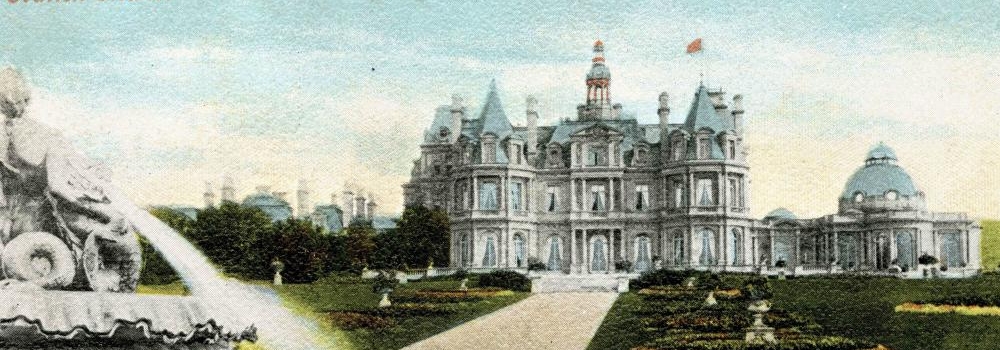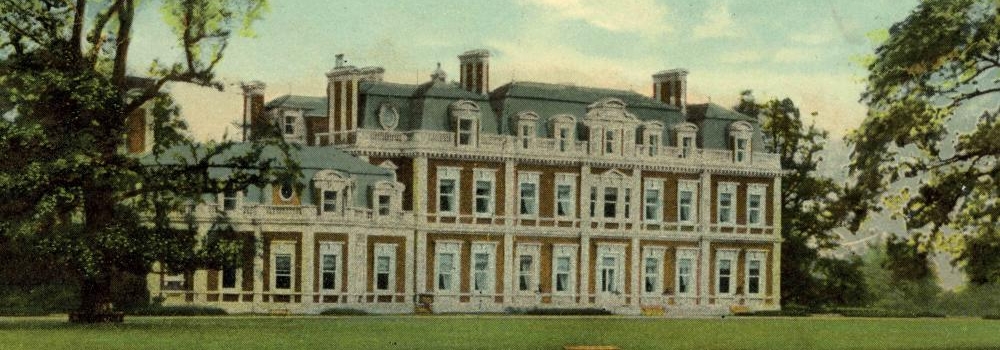On 7 June 1904, the Directors of the Fondation Rothschild held their first meeting in Paris. The formal establishment of the Fondation Rothschild in July of that year was the continuation of generations of the French Rothschild family’s commitment to social welfare, and the beginning of an ambitious programme to provide the workers of Paris with high-quality affordable homes.
Many members of the Rothschild family in numerous European cities were active in a wide spectrum of charitable activities. They ranged from housing and relief for the poor, medical care and advanced medical research, orphanages and education, and patronage of the arts.
Origins
It was James de Rothschild (1792-1868), founder of the Paris Rothschild bank, who first established a philanthropic foundation in Paris in 1852. One of its first activities was the construction of a hospital at 76, rue de Picpus. The hospital, a hospice for the elderly, opened on May 25, 1852 and was originally intended to treat Jewish patients. Between 1852 and 1860, the hospital accommodated 8,000 patients, and numbers increased steadily in the following decades. In the early twentieth century, James’ youngest son Edmond de Rothschild (1845-1936) endowed the hospital with funds which enabled the hospital to expand and acquire further buildings, and between 1912 and 1914 the hospital, now located in the rue Santerre, was completely rebuilt to plans by the architect Lucien Bechmann. Declared a military auxiliary hospital during the First World War, it treated both the wounded from the front and civilian victims of the war without religious distinction.
A broader vision
The early industrial age witnessed not only the formation of a new class of working poor and the rise of self-made businessmen and industrialists, but also an unprecedented development of voluntary charity to combat the threats and conflicts arising from the enormous gap separating the rich and the poor. One of the major concerns was the problem of housing. In Paris, Rothschild activities in this regard can be traced back to the early 1870s. In a letter of 12 November 1871 to the Mayor of Paris, the whole of the second generation of French Rothschilds, James’ sons – Alphonse (1827-1905), Gustave (1829-1911), Edmond (1845-1934), his daughter Charlotte (1825-1899) and Adèle (1843-1922), the widow of James’ son Salomon (1835-1864) - announced the wish of their late father James to create a ‘fondation spéciale et perpétuelle’. Its purpose was to pay rent subsidies to the city’s needy families. On 11 January 1874, the charitable foundation L’Oeuvre des Loyers was established by a convention de famille, with a capital of a million francs, later augmented by another 0.6 million after the death of James’s widow Betty (1824-1866). Over the following decades, the Oeuvre paid 100,000 francs each year, which the mayors of the 20 Paris arrondissements helped to distribute to tenants in need, regardless of their political or religious backgrounds.
Driven by the desire to prove that in resolving the social problems of an industrial society, the liberal principle of voluntary philanthropy would function better than a welfare state, the scope of activities of the Fondation Rothschild was extended by James’ sons Alphonse, Gustave and Edmond in 1904. In addition to healthcare, the Fondation broadened its objectives to consideration of ways to improve the material condition of workers. On 27 June 1904, the brothers informed the Ministre du Commerce about an ambitious project for providing social housing. The brothers were to create the Fondation Rothschild with an endowment of a staggering 10 million francs, the primary aim of which was to “ameliorate the material living conditions of the workers.” The statutes, which can be found in the Archive, set out a programme that went beyond housing, embracing such matters as health, education, nutrition, and childcare. The State approved its charitable status in July 1904.
Housing projects of the Fondation Rothschild
The scope of plans initiated by the Fondation Rothschild were unprecedented. No comparably extensive project had ever been carried out before to provide a model. The Fondation launched an architectural competition and its experts undertook an exploratory trip to England, where they were able to examine first-hand the buildings erected by The Four Per Cent Industrial Dwellings Company, which had been established to provide “the industrial classes with commodious and healthy Dwellings at a minimum rent”. Still in existence today under the name The Industrial Dwellings Society, it was initially conceived by a broad group of magnates from the Anglo-Jewish elite in London in 1884, with the staunch support of Nathaniel, 1st Lord Rothschild (1840-1915) who became the sole major stakeholder in the project. The name Four Per Cent embraced the economic formula of philanthropic housing schemes as acknowledged by the international community of social housing experts: a nett return in rents of 4-5% was considered the minimum profit margin that would attract capital and at the same time allow for the erection of hygienic, bright and properly aired tenement blocks providing affordable flats for workers, artisans and low-paid employees.
The Fondation Rothschild conceived a project four times the size of that of their English cousin, with over 800 apartments. The architectural competition was meant to inspire ideas, with significant prize moneys for the winners but no guarantee of their concepts being realised. In order to maintain efficiency in both planning and building and to avoid extravagant artist-architect attitudes, an architectural department was set up within the Fondation. Contemporary publications record elevations and plans for social housing in the rue de Prague, Paris, by MM Andre Ventre and Leon Bernard. The design finally chosen was by Augustin Adolphe Rey and Henry Provensal; Rey became chief architect of the Rothschild Fondation.
A lasting legacy
Within a decade, the Rothschild Fondation and its architects managed to erect five substantial housing complexes on the roads named Marcadet, Bargue, Belleville, Popincourt and Lamblardie, spread across five different Paris arrondissements, providing almost a thousand flats before the First World War, and 1,125 by 1919. The properties also included 160 commercial sites. The building materials used meant that the exterior had a less forbidding appearance than many similar projects. The buildings had excellent sanitary provisions and communal services, the later ones benefiting from educational provisions, a dispensary, and an electricity supply. The health of the residents had a considerable impact on the design and layout; constant optimum ventilation and bright rooms were of utmost importance in the struggle against tuberculosis.
Before the First World War, the existence of the Rothschild Fondation encouraged other magnates to create their own institutions, essentially along the Rothschild lines. Among them were the Fondation Alexandre et Julie Weill (1905), the Fondation de Madame Jules Lebaudy (1905), and the Fondation Singer-Polignac (1909). Their success even induced the Paris city authorities to obtain a state loan of 200 million francs in 1912 for the construction of 26,000 flats for families of modest income.
000/2322 Plans of unexecuted design for social housing by the Fondation Rothschild, rue de Prague, Paris, by MM André Ventre and Léon Besnard. Reproduced in L'Architecture, Supplement No.36, 1905.
000/2395 Article on 'The Rothschild Artisan's Dwellings in Paris Designed by Agustin Rey, described by H.Frantz.' Reproduced in The International Studio, An Illustrated Monthly Magazine of Fine Applied Art, No.110, Vol XXVIII, April 1906






















